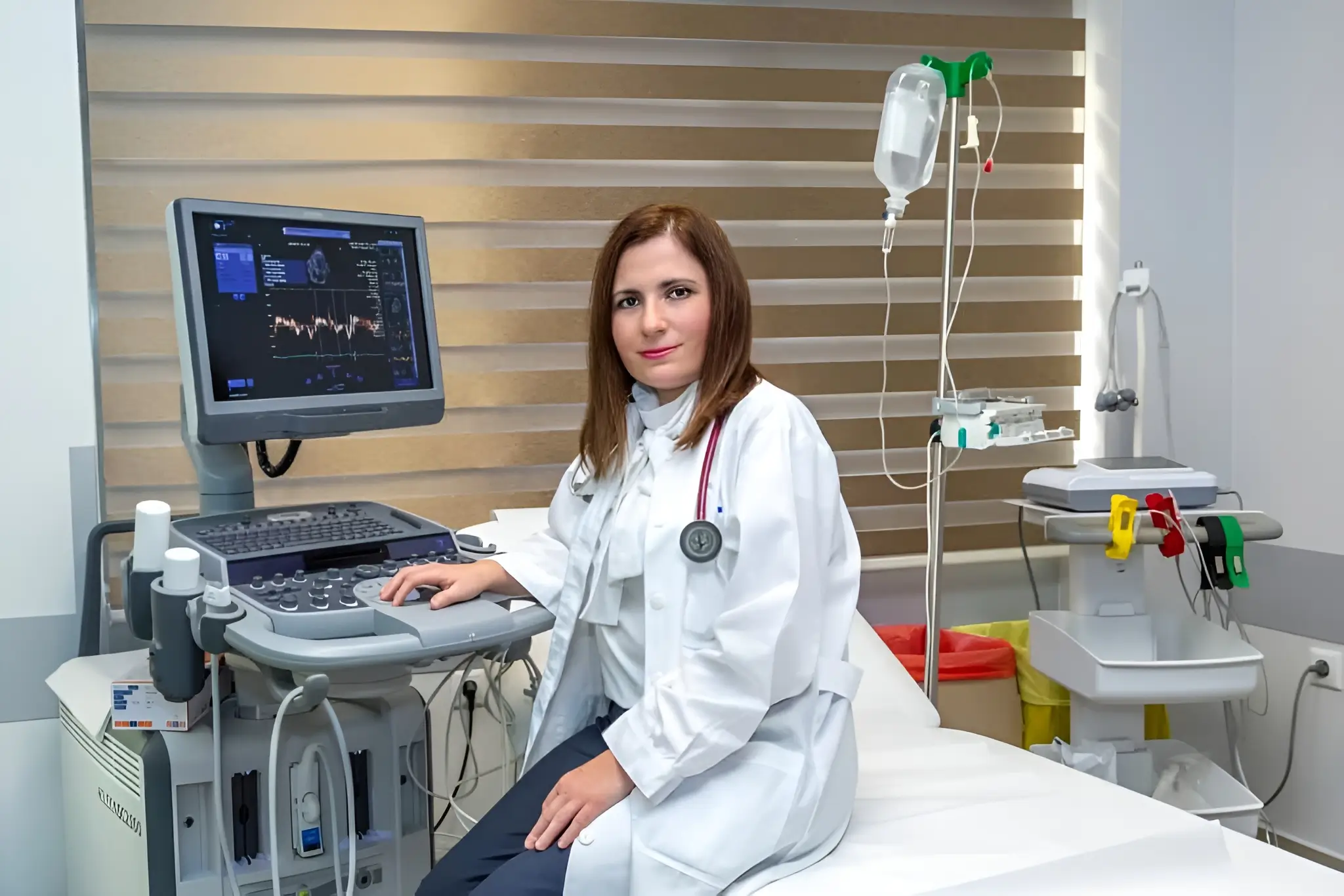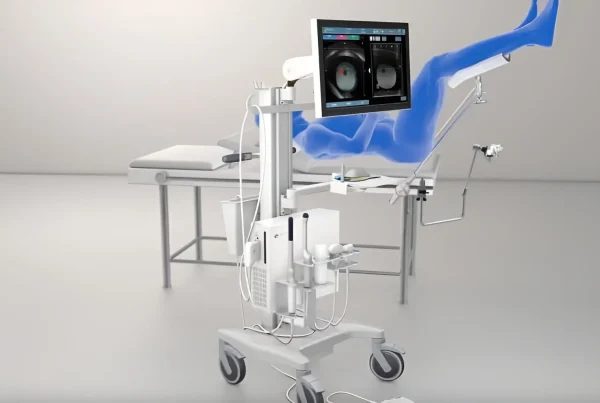Dynamic echocardiography (stress echo) is a modern diagnostic test performed by a specialist cardiologist, mainly to identify significant narrowing of the coronary arteries of the heart (coronary artery disease).
How does it work?
The test is performed in specialised centres, such as Therapis General Hospital, by highly experienced personnel using state-of-the-art equipment, with the aim of ensuring not only the reliability of the test but also the safety of the patient during the procedure.
The stress techniques used are either exercise (bicycle, treadmill) or, more commonly, medication (usually with dobutamine, dobutamine stress test). The specialist cardiologist takes ultrasound images at various stages as the heart rate increases, while also recording the electrocardiogram and blood pressure. When the medication is stopped, the heart rate returns to normal after a few minutes. After the test, the patient returns to their normal activities.
The patient is instructed to fast for about 2 hours, and after consultation with the doctor, it may be necessary to discontinue certain medications (such as beta-blockers
What are its advantages?
- It is performed using ultrasound (i.e., without radiation).
- It is short in duration (15-30 minutes).
- It can also be performed on individuals who are unable to exercise.
- It has greater diagnostic accuracy than a simple stress test (approximately 90%), since in addition to the electrocardiogram, the physician monitors changes in heart contractility (wall motion) using ultrasound. It therefore tends to replace the simple stress test
- The results are obtained immediately. In the event of pathological findings, the patient is informed and a decision is made on further treatment, either with medication or invasively with coronary

Penelope Rafouli-Stergiou, MD, PhD – Director of the Cardiology Department at Therapis General Hospital
Who is recommended to undergo a stress echo?
- With risk factors for coronary artery disease (such as smoking, heredity, hypertension, diabetes mellitus, dyslipidemia, obesity, metabolic syndrome)
- With symptoms such as chest pain, shortness of breath, or easy fatigue (provided that acute myocardial infarction has been ruled out)
- With other symptoms, such as syncope or complex arrhythmias and the possibility of coronary artery disease
- With inconclusive results from other diagnostic tests for coronary artery disease, such as stress testing, cardiac scintigraphy, or coronary CT angiography – calcium score
- Preoperatively in non-cardiac surgery to assess cardiovascular risk during surgery
- In patients with known coronary artery disease (previous myocardial infarction, angioplasty-stent or coronary artery bypass grafting-CABG) to assess the outcome of surgery and medication, diagnose new stenoses in coronary vessels or grafts, assessing the viability of the affected part of the heart, and the overall functionality of the heart
- In patients with heart failure, to determine whether it is due to coronary artery disease (ischemic), in cases where the patient is not undergoing coronary angiography
- In patients with valve disease (e.g., aortic stenosis, mitral insufficiency) to better assess the severity of the disease and the symptoms that cause fatigue, in order to guide possible invasive treatment




